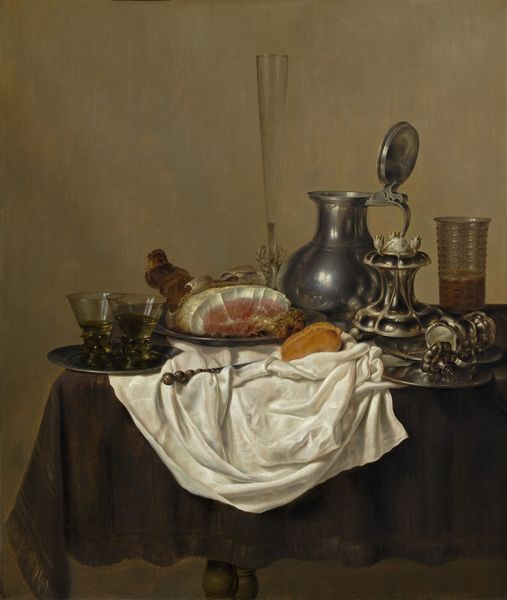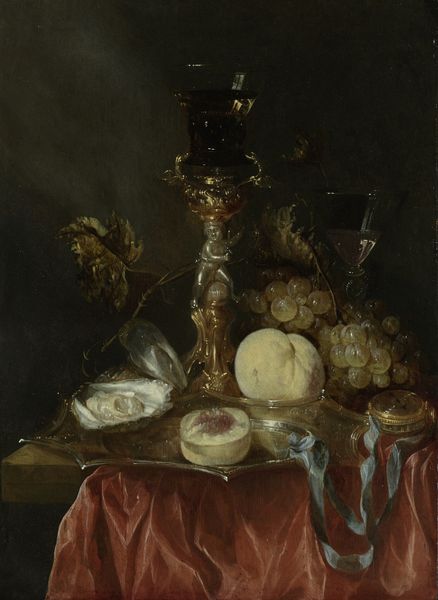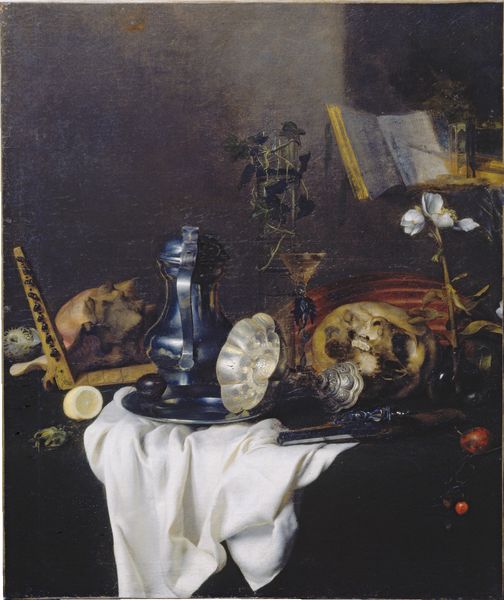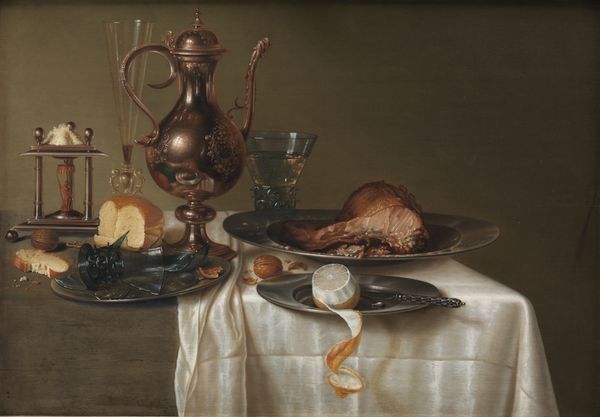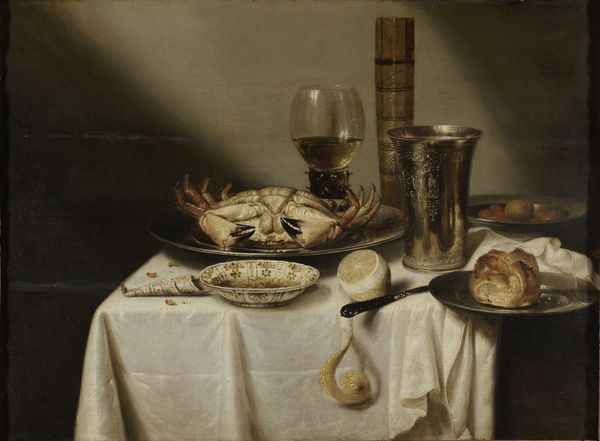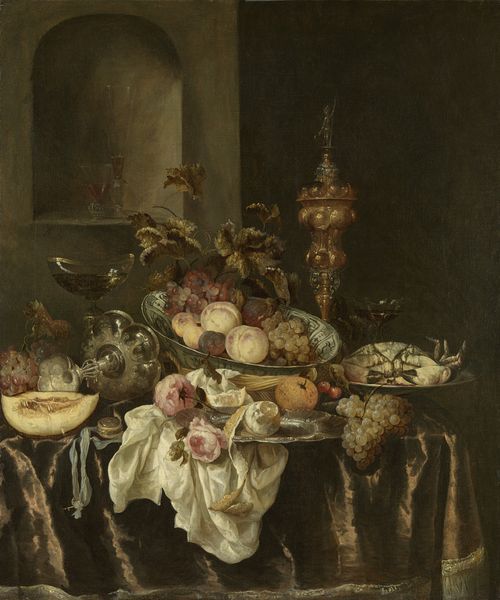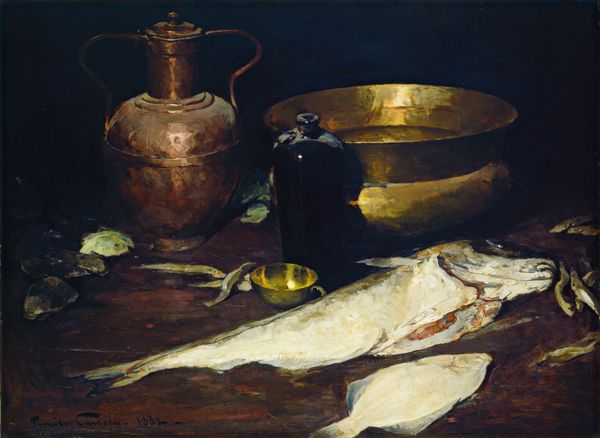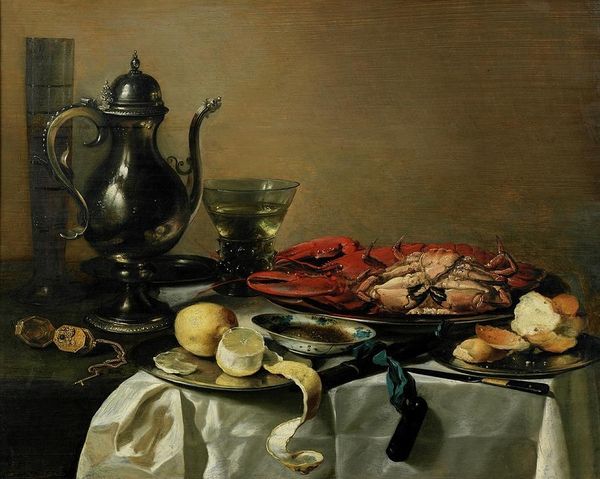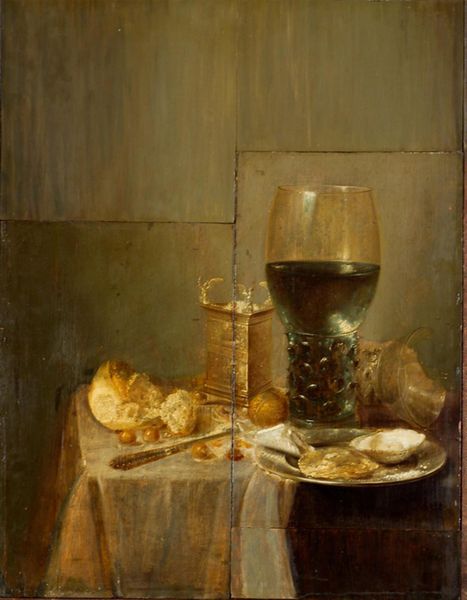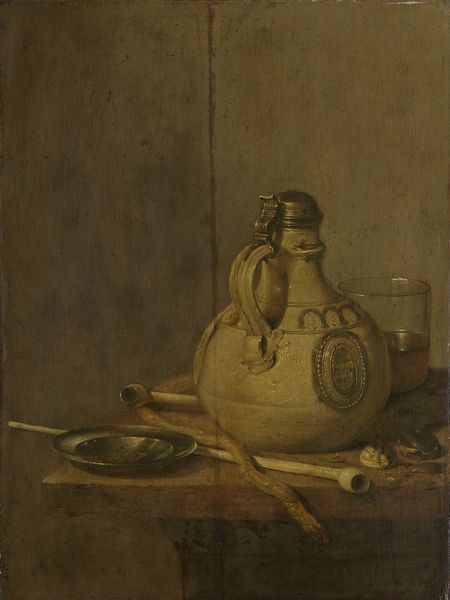
painting, oil-paint
#
baroque
#
dutch-golden-age
#
painting
#
oil-paint
#
oil painting
Copyright: Public domain
Editor: Here we have "Still Life with Ewer, Vessels and Pomegranate," a shimmering oil painting created around 1645 by Willem Kalf. Looking at it, I am struck by its opulence, like stumbling upon a pirate's treasure hoard in a dimly lit room. What do you see in this arrangement? Curator: You’ve touched on its core, truly. It's a tableau of abundance, isn’t it? Kalf’s Dutch Golden Age still lifes aren’t just about showing off wealth, though. See how the light dances on that ornate ewer, practically vibrating with energy? The painting speaks to the transient nature of earthly possessions; a gentle reminder, perhaps, of mortality. Those gleaming objects won't last forever, will they? Just like the opened pomegranate hints at fleeting pleasure and abundance. Editor: That’s a more somber read than I initially gathered. Does the meticulous detail contribute to that sense of transience? Curator: Absolutely. Kalf was a master of texture. Look closely - you can almost feel the cool smoothness of the silver tray, or taste the tartness of that lemon. It’s a kind of hyper-realism intended to draw you into a meditative space, contemplating the richness and impermanence of life. Editor: So it is trying to say more than just pretty things are nice to have. Fascinating. Curator: Exactly. The play of light, the arrangement of objects…it's all a carefully constructed stage for contemplation. It reminds me a little of Vanitas tradition but approached with this painter's exquisite understanding of color. Editor: I came in thinking pirates' gold, but I am leaving with mortality and tart lemons. Curator: That’s the joy of art, isn’t it? Changing perspectives, altering assumptions...and sometimes offering the unexpected taste of truth.
Comments
No comments
Be the first to comment and join the conversation on the ultimate creative platform.
